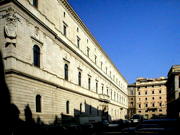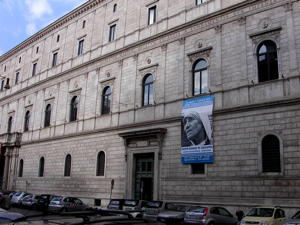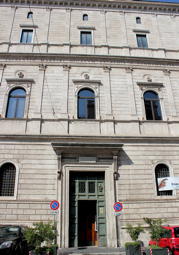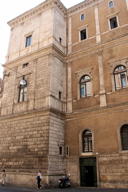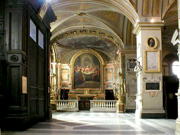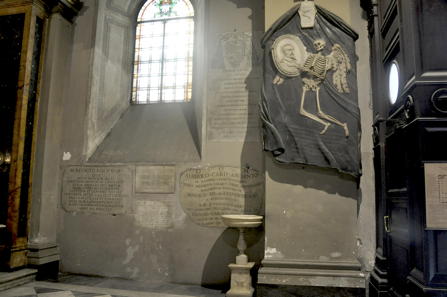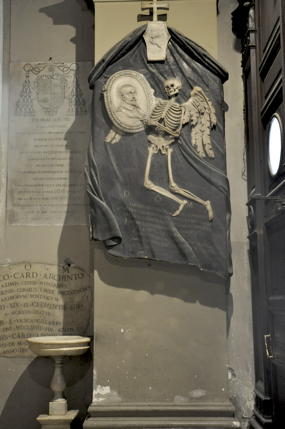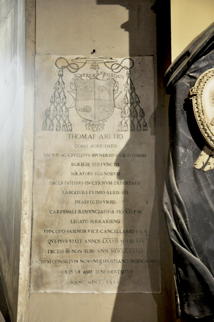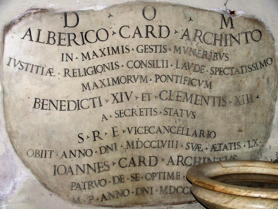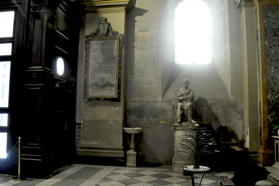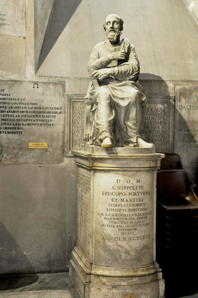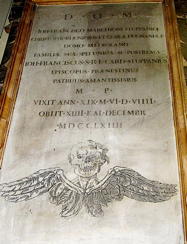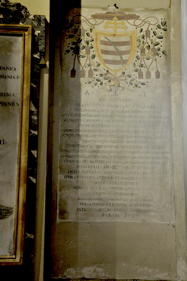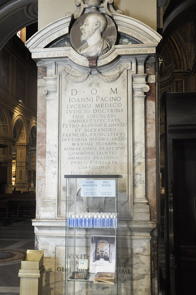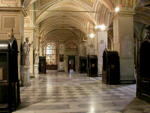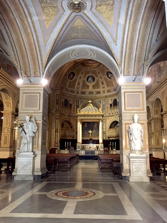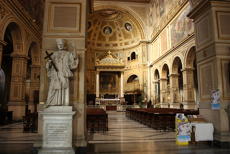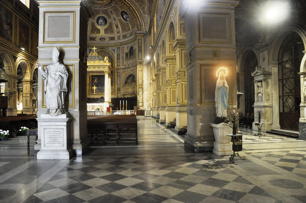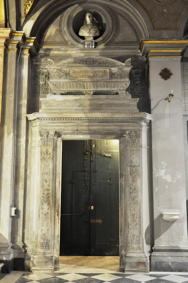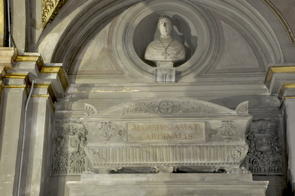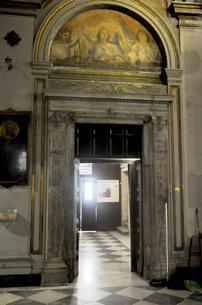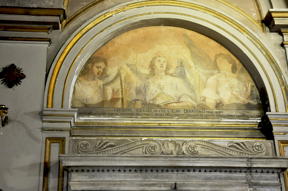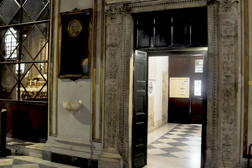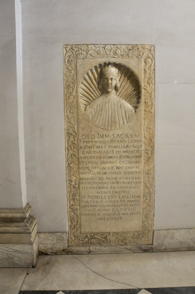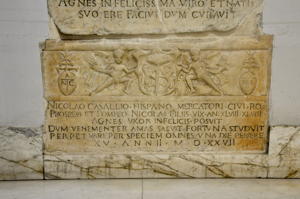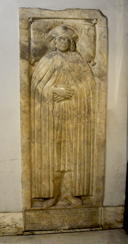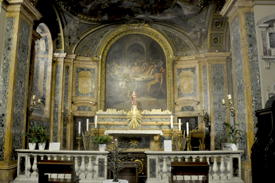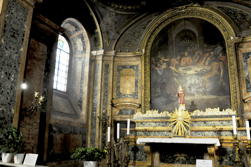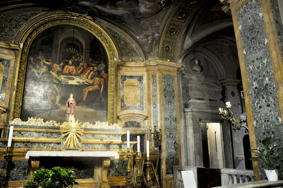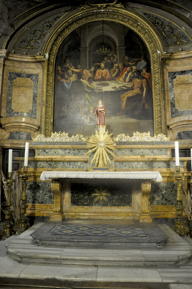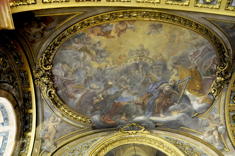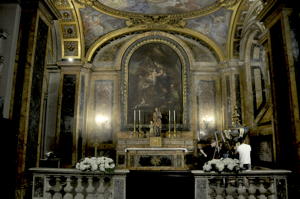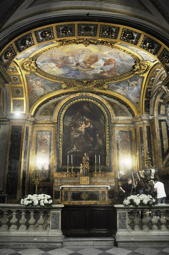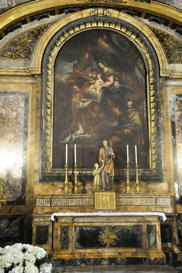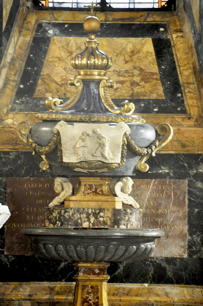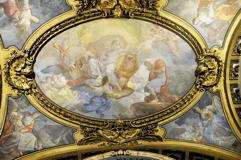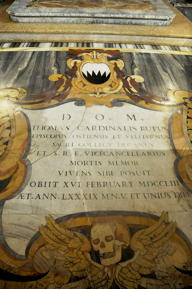San Lorenzo in Damaso is a church dedicated to the deacon and martyr St Lawrence. It was one of the first parish churches in Rome, known as the Titulus Damasi. It has the dignity of a minor basilica. Located a few steps from Campo de 'Fiori, in the current Piazza della Cancelleria.
For reference, a plan of the church is available
here.
The church is believed to have been founded in the home of the Pope St Damasus (366-383), by the Pope himself near the Theater of Pompey. A restoration was undertaken by Pope Adrian I (772-95), and it was then that the relics of Pope St Damasus were brought here from his family tomb on the Via Ardeatina. They have been under the high altar ever since.
This ancient basilica and palace were demolished in 1484 to make room for the new Palazzo della Cancelleria for Raffaele Cardinal Riario, nephew of Sixtus IV (1471-1484). The new church was incorporated into the fabric of the palazzo. For awhile St Bridget of Sweden (c.1303-1373) lived in the palace. Considered a masterpiece of Renaissance architecture, the palazzo was built by an unknown architect; the records were lost in the sack of 1527. It is thought that Donato Bramante may have helped at a late stage, possibly designing the beautiful courtyard.
The new church originally had no ceiling or monumental entrance. Cardinal Alessandro Farnese provided both in the mid 16th century. The entrance portal was by Vignola. Between 1638 and 1640, Gian Lorenzo Bernini was commissioned by Cardinal Francesco Barberini to re-fit the church's sanctuary.
During the French occupation in 1799, the church was desecrated, and the frescoes decorating its walls were damaged beyond repair. In 1807, Vice-Chancellor Cardinal Francesco Carafa entrusted its restoration was to Giuseppe Valadier. The last phase of the restoration (1816-1820) was completed by Gaspare Salvi. There was another restoration by Virginio Vespignani in the late 19th century. The nave walls received an extensive fresco cycle by Luigi Fontana. The work was completed only in 1882.
The palace is now the property of the Vatican and contains the offices of the various Tribunals of the Roman Curia.
